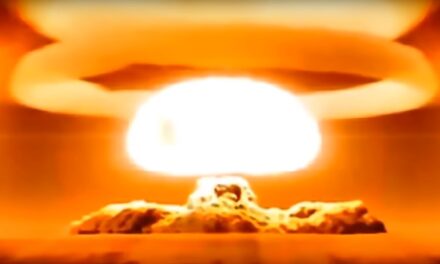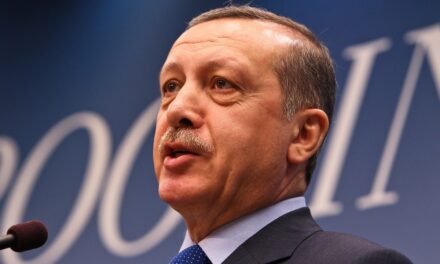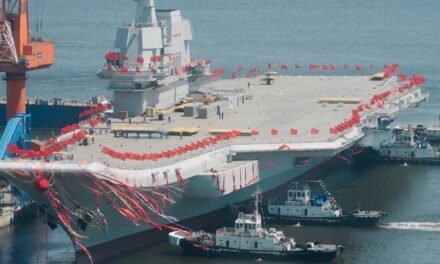We support our Publishers and Content Creators. You can view this story on their website by CLICKING HERE.
Key Points: The debate over how many B-21 Raider stealth bombers the U.S. Air Force should build hinges on cost, capability, and strategic needs. While the Air Force aims for 100 bombers, some analysts advocate for over 200 to ensure dominance against China and Russia.
-However, the high costs of concurrent programs like the NGAD fighter and Collaborative Combat Aircraft (CCA) make a larger fleet financially challenging.
-A prudent approach might involve pausing after the initial 10 units to assess performance and avoid overruns, sticking to the planned 100 bombers to balance readiness with budget constraints.
How Many B-21 Raider Stealth Bombers Should Be Built?
There is a major question about the B-21 Raider program. How many should be built? After the remarkably expensive F-35 program, could the U.S. Air Force spend tens of billions, even hundreds of billions of dollars on a new stealth bomber? That is open to debate, but we know the B-21 looks great and is flying impressively already. It is so far coming in on-time and under budget. The issue about the numbers to be built has many defense analysts throwing figures out there. One hundred is usually the number offered by the Air Force. Others have called for more than 200.
How many B-21 Raiders should actually get built?
So Far So Good on B-21 Raider
Northrop Grumman is doing a good job managing expectations of the B-21. The behemoth defense contractor refrains from being overly optimistic and has kept from promising things it cannot deliver. It has the airplanes coming off the production line at a consistent rate. They have conducted some media events to show it off – hopefully not giving too much information and design characteristics for Russia and China to copy.
Profit Motive Could Plus-up the Number
Northrop Grumman, of course, would love to build more than 100 B-21s. It is a publicly-traded for profit enterprise that needs to deliver revenue growth and earnings appreciation every quarter to keep Wall Street happy. Its official website even said that “some defense analysts believe that the Air Force should plan to purchase at least 200 B-21s.”
In April, Air Force Chief of Staff General David Allvin said that even though the branch was seeking at least 80 B-21s in the early days, the number was beefed up to 100 to maximize its firepower effect. Allvin explained to the Senate Armed Services Committee that the Air Force would remain committed to the 100 figure because by the time that number is built, technology could change. So, under that reasoning, the Air Force should not order more than 100.
Shown is a B-21 Raider artist rendering graphic. The rendering highlights the future stealth bomber with Edwards Air Force Base, Calif., as the backdrop. Designed to perform long range conventional and nuclear missions and to operate in tomorrow’s high end threat environment, the B-21 will be a visible and flexible component of the nuclear triad. (U.S. Air Force graphic). This is the third USAF rendering of the B-21 Raider. Note changes in the windshield from previous official renderings.
Mind the Budget
Plus, cost is a major factor. There is the Next-Generation Air Dominance (NGAD) fighter to consider. The price for that 6th generation fighter is already upward of $300 million a jet. Because of that sticker shock and questions about the design, the NGAD program has been placed on pause until the new year to reduce the price.
It would be great if the Air Force had both the NGAD and the B-21 flying together to punish the Russians or Chinese if needed. They can be “drone motherships” with digitally tethered unmanned vehicles called Collaborative Combat Aircraft. This would be a huge force multiplier, but again, with the CCAs, we are talking about real money to be combined with the NGAD and B-21.
How About More than 200 B-21 Raiders?
The price issue doesn’t seem to bother one defense analyst. “In a report authored by former U.S. bomber pilot Mark Gunzinger, he stressed that the U.S. would need to neutralize a very large number of targets deep inside Chinese and Russian airspace in the event of war, which would necessitate a B-21 fleet far exceeding the projected 100 bombers. He called for a fleet of a little over 200 B-21s,” according to Military Watch Magazine.
That’s too many. Two hundred would be way too expensive and would take budget dollars away from NGAD. If the Air Force wants both stealth airplanes, I favor staying at the 100 level. Besides, aren’t we getting ahead of ourselves?

The B-21 Raider was unveiled to the public at a ceremony December 2, 2022 in
Palmdale, Calif. Designed to operate in tomorrow’s high-end threat environment, the B-21 will play a critical role in ensuring America’s enduring airpower capability. (U.S. Air Force photo)
Let’s build them individually and ensure all the kinks are worked out of such a complex airframe. We have built flying wedge airplanes like the F-117 Nighthawk and the B-2 Spirit bomber, so the design shouldn’t be a problem. But I want it to be a “drone mothership” with CCAs flying ahead. It would be great if it could be re-fueled by a stealth unmanned fuel tanker.
It seems that the Air Force is going wild with next-generation airplanes. Yes, it is essential to plan for the 2030s, but we have to keep resources under control. If we could get the NGAD, the B-21, the CCA, and a stealth unmanned tanker in the 2030s, that would be optimal to answer the threats from Russia and China’s own 5th and 6th generation airplane programs.
But let’s not break the bank. The Air Force may want to place an operational pause on the B-21 program at the 10-airplane mark and conduct an acquisition after-action review to make sure the test and evaluation phase is going well and that there are no delays and cost overruns.
Let’s be prudent with the B-21 Raider and stick to that 100 number. We want as many Air Force toys as possible to dominate the skies next decade, and building more than 100 B-21s will make other future programs suffer.
About the Author: Dr. Brent M. Eastwood
Brent M. Eastwood, PhD, is the author of Don’t Turn Your Back On the World: a Conservative Foreign Policy and Humans, Machines, and Data: Future Trends in Warfare, plus two other books. Brent was the founder and CEO of a tech firm that predicted world events using artificial intelligence. He served as a legislative fellow for U.S. Senator Tim Scott and advised the senator on defense and foreign policy issues. He has taught at American University, George Washington University, and George Mason University. Brent is a former U.S. Army Infantry officer. He can be followed on X @BMEastwood.

 Conservative
Conservative  Search
Search Trending
Trending Current News
Current News 





